Ubiquitous Computing
Data is displayed for academic year: 2023./2024.
Course Description
Definition of ubiquitous and pervasive computing, cyber-physical systems, Internet of Things, characteristic properties and examples of those systems. Ubiquitous computers and systems: architecture, properties, communication, energy sources, senses and actuators, power management. Interaction between components of ubiquitous systems, systems and environment, systems and users. Communication and coordination between system components, communication technology, communication protocols (M2M, IoT). Services in ubiquitous systems. Collaborative aspects of ubiquitous systems. Specifics of developing software support for ubiquitous systems; system architectures, operating systems, frameworks, middleware, services. The role of adaptability in ubiquitous systems: dimensions, layers, self-organization, self-adaptability, location awareness, context awareness. Human-machine interface in ubiquitous computing.
Study Programmes
University graduate
[FER3-HR] Audio Technologies and Electroacoustics - profile
Elective Courses
(2. semester)
[FER3-HR] Communication and Space Technologies - profile
Elective Courses
(2. semester)
[FER3-HR] Computational Modelling in Engineering - profile
Elective Courses
(2. semester)
[FER3-HR] Computer Engineering - profile
(2. semester)
[FER3-HR] Computer Science - profile
Elective Courses
(2. semester)
[FER3-HR] Control Systems and Robotics - profile
Elective Courses
(2. semester)
[FER3-HR] Data Science - profile
Elective Courses
(2. semester)
[FER3-HR] Electrical Power Engineering - profile
Elective Courses
(2. semester)
[FER3-HR] Electric Machines, Drives and Automation - profile
Elective Courses
(2. semester)
[FER3-HR] Electronic and Computer Engineering - profile
Elective Courses
(2. semester)
[FER3-HR] Electronics - profile
Elective Courses
(2. semester)
[FER3-HR] Information and Communication Engineering - profile
Elective Courses
(2. semester)
[FER3-HR] Network Science - profile
Elective Courses
(2. semester)
[FER3-HR] Software Engineering and Information Systems - profile
Elective Course of the profile
(2. semester)
Elective Courses
(2. semester)
Learning Outcomes
- Analyze specific requirements for a computer system deeply embedded in the environment
- Choose the right foot components and technologies to realize the ubiquitous system
- Identify and use appropriate architectural patterns and standards to realize the ubiquitous computer system
- Select appropriate communication technologies and protocols to connect components of the ubiquitous system to a functional unit
- Develop simpler self-organization mechanisms based on information about the location and / or context of the system
- Evaluate the appropriateness of individual mechanisms of user interaction with the ubiquitous system
Forms of Teaching
Lectures
Lectures
LaboratoryLaboratory Exercises
Week by Week Schedule
- Key challenges in ubiquitous computing, Foundations of cyber-physical systems, Smart objects, smart spaces, internet of things, Norms and standards, Examples of ubiquitous systems
- UBICOMP device types and constraints, UBICOMP device architectures and organization, Processing, storage and communication capabilities, tradeoffs, Power sources, characteristics, energy harvesting, Sensors and actuators for ubiquitous devices, Power management
- Human-to-machine interactions,requirements, patterns, Machine-to-machine interactions, protocols, standards, Communication patterns and traffic types, Indoor and outdoor localization methods, Local and global time, clock synchronization, Collaborative aspects of ubiquitous systems (sensing, actuation, energy conservation, data processing, storage)
- Infrastructure-based communication, Ad-hoc based communication, Energy conservation methods in dense/low duty cycle wireless networks, Routing protocols in dense/ad hoc networks, Device mobility, mobile ad-hoc networks
- Cyber-Physical systems, smart devices, sensors, and actuators, Internet of Things protocols
- Internet of Things protocols, Software platforms and services for the Internet of Things
- Wireles PAN (WPAN) technologies: Bluetooth, ZigBee, Wi-Fi, Infrared Data Association (IrDA), Wireless Universal Serial Bus (WUSB), Radio-frequency identification (RFID), Near Field Communication (NFC),and Z-Wave, Bluetooth: protocol stack, topology, addressing, physical channels, packet formats, packet types, error correction, logical channels, and clock timings
- Midterm exam
- ZigBee: protocol stack, topologies, packet format, packet types, and error correction, UWB, RFID
- Architecture of M2M communication networks, Services in M2M communication networks
- Services in M2M communication networks, Security in M2M communication
- Operating systems, UBICOMP SW design methodologies , UBICOMP programming paradigms and languages, Middleware for ubiquitous systems, UBICOMP frameworks and services, UBICOMP Architectures, Software design and power consumption implications
- Dimensions of adaptivity, Layers of adaptivity, Self-organization, Dynamic adaptation, Location-awareness, Context-awareness
- Ubicomp (ubiquitous and context-aware) interaction
- Final exam
Literature
(.), Rajeev Alur, "Principles of Cyber-Physical Systems", MIT Press, 2015,
(.), Stedan Poslad, "Ubiquitous Computing", Wiley, 2009.,
(.), William Stallings, "Wireless Communication Networks and Systems", Pearson, 2018.,
(.), George Coulouris, Jean Dollimore, Tim Kindberg, Gordon Blair, "Distributed Systems: Concepts and Design", Pearson, 2011.,
For students
General
ID 222793
Summer semester
5 ECTS
L1 English Level
L1 e-Learning
45 Lectures
0 Seminar
0 Exercises
15 Laboratory exercises
0 Project laboratory
0 Physical education excercises
Grading System
Excellent
Very Good
Good
Sufficient


 Pristupačnost
Pristupačnost
